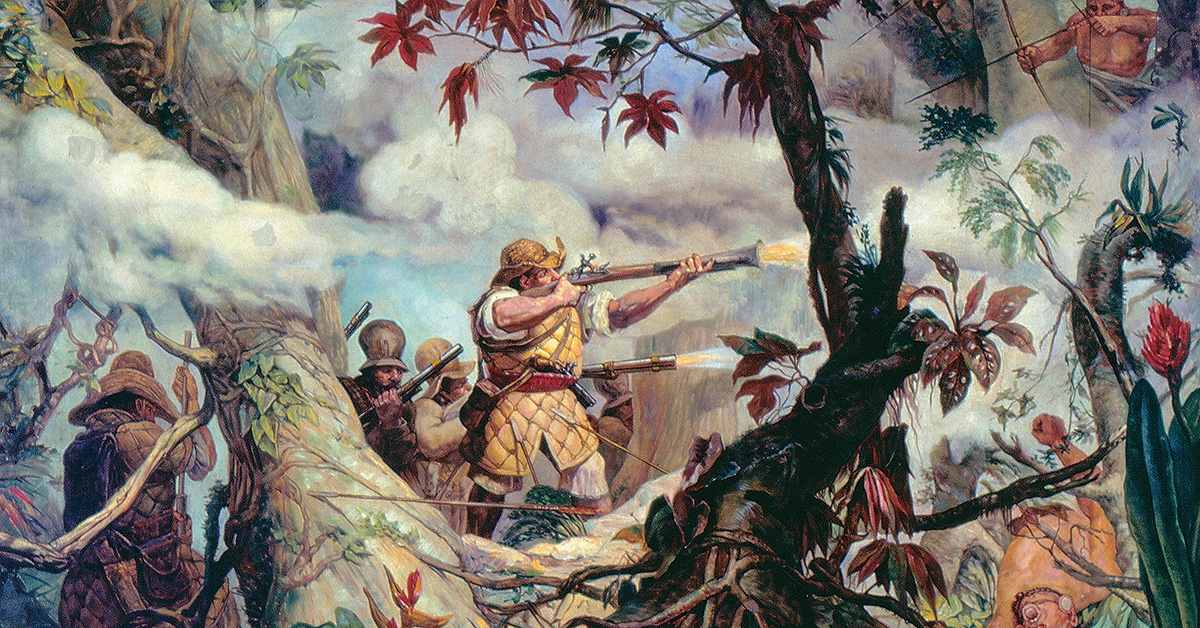Though founded by erstwhile soldier Iñigo de Oñaz y Loyola—aka Saint Ignatius of Loyola—the Society of Jesus was not initially a military-religious order. That changed, however, during the 17th and 18th centuries in the Río de la Plata basin of South America. While this militarization gained the Jesuits a century of success in the Spanish colonial province of Paraquaria, it would ultimately help bring about their downfall.
Pope Paul III’s formal confirmation of the Roman Catholic order on Sept. 27, 1540, made Loyola and his Spanish brethren soldiers of Christ. Originally intending to convert Muslims in the Holy Land, Loyola soon shifted the society’s focus to challenge the spread of Protestantism in Europe and seek converts among more accepting people in territories colonized by the Spanish and Portuguese.
To accomplish their objectives, the Jesuits became preeminent educators, establishing colleges to instruct the elite and future leaders of Catholic Europe. Their apostolic zeal also led them to establish missions throughout the Americas and Asia. In addition to their vows of poverty, chastity and obedience, they also swore a vow of obedience to the Pope and resolved to live out their motto, Ad maiorem Dei gloriam (“To the greater glory of God”).
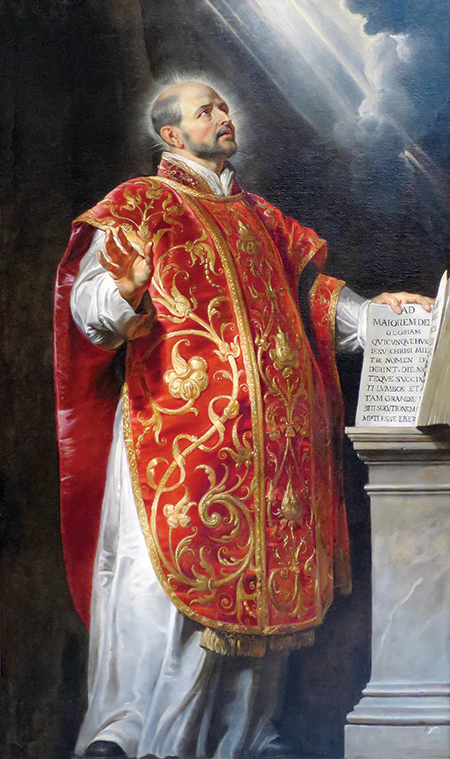
On Feb. 9, 1604, Jesuit Superior General Claudio Acquaviva ordered the establishment of Paraquaria. Within the province—radiating from the bishopric of Asunción across Paraguay into sections of Bolivia, Chile, Uruguay and Argentina (the provinces of Misiones and Entre Ríos) and the Brazilian regions of Itatín (part of the present-day state of Mato Grosso do Sul), Guayrá (largely the state of Paraná) and Tapé (the state of Rio Grande do Sul)—the Jesuits evangelized the indigenous peoples and founded mission pueblos known as reducciones (“reductions”). They were tasked with bringing together tribal populations from the surrounding forests to live in communities. At one point 30 missions flourished with more than 140,000 Guaraní inhabitants.
Paraquaria enjoyed a special status within the Spanish empire, as the Jesuits received an exemption from the existing encomienda laws. Under those statutes indigenous people could be compelled to work (though technically not as slaves) for Spanish landowners and overlords as a form of tribute. In Paraquaria the Guaraní were initially exempted from taxes, then paid tribute directly to the Spanish king and enjoyed a measure of self-rule and landownership. Each mission was supervised by two Jesuit priests with veto power over almost all decisions. Elected natives served as a governing body and helped maintain order.
Communal land provided housing for the aged, widows and orphans and for the community as a whole in time of need. Attached to the missions were large estancias (ranches) comprising thousands of acres on which the Jesuits raised cattle and horses. The Jesuits also operated yerbales (plantations of yerba maté, a holly species whose leaves and twigs are used to make tea), giving them a virtual monopoly in the trade of what became known as “Jesuit tea.”
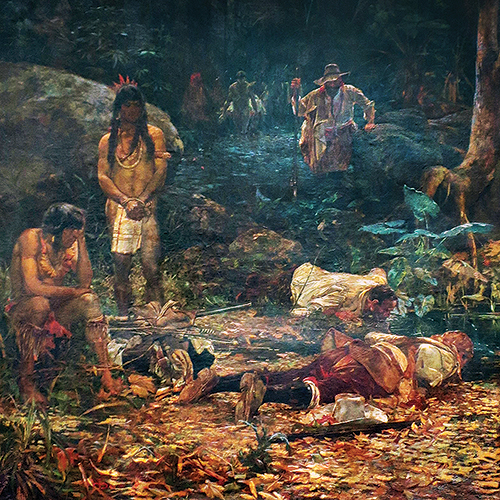
Inevitably, the Jesuits’ ownership of immense tracts of land and concentration of the indigenous population in the missions created conflicts with Europeans who had depended on free (i.e., slave) labor for their revenues. Also, as Portugal permitted the enslavement of indigenous people, slave hunters from São Paulo—variously known as Paulistas, mamelucos or bandeirantes—begrudged the Jesuits’ protection of the Guaraní, which deprived them of a theretofore reliable source of income. Portuguese landowners also resented Jesuit protection of the indigenous people, as the latter came cheaper than African slaves. (Perplexingly, while the Jesuits championed the Guaraní cause, they turned a blind eye to the enslavement of Africans, even owning slaves themselves.)
Rancor increased as the Jesuits persuaded the Spanish king to exclude all Europeans, Africans and mestizos (mixed-race people) from entering the pueblos or making contact with the Guaraní. The Jesuits also forbade the use of European languages in their territory. Knowledge of Guaraní grammar, vocabulary and the spoken language was a great advantage for the Jesuits in their efforts to catechize and control the populace.
The bandeirantes, on realizing the reductions actually facilitated the capture and enslavement of those gathered within, first struck the Jesuit missions in the late 1620s. Initially defenseless, the Jesuits and Guaraní could only withdraw south, closer to the main Spanish settlements. Any missions in Itatín and Guayrá not extinguished violently were abandoned.
Undeterred, the slavers followed the migrations of those fleeing their initial attacks, ruthlessly destroying newly established missions. In 1631–32 Jesuit Father Antonio Ruiz de Montoya organized an epic exodus of some 12,000 Guaraní to relative safety in what today is the Argentine province of Misiones. Ravaged by hunger, disease and hardship, two-thirds of those who set out died en route.
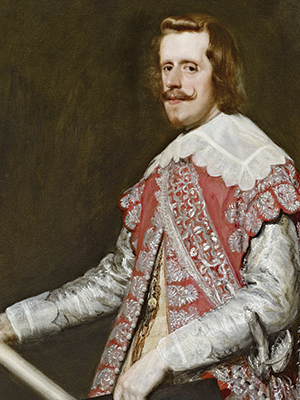
While he embraced the idea of winning the Guaraní with “the Word” rather than the sword, by 1637 Montoya saw the necessity of a more forceful response to the slavers’ continued attacks. Setting down his pen, he appealed in person to Spanish King Philip IV for permission to arm the indigenous warriors for self-defense. Montoya also made a case for establishing a fire wall against Portuguese encroachment on Spanish territory.
The boundaries between the Spanish and Portuguese dominions in South America were ill-defined in the 16th and 17th centuries. The 1494 Treaty of Tordesillas had demarcated a boundary between the New World holdings of the two kingdoms. But Portugal encroached on Spanish territory from the outset, and even more so after the 1580 union of Spain and Portugal under the Spanish Hapsburgs.
So it was Philip IV pondered Montoya’s compelling argument in his role as king of Spain and Portugal. On May 21, 1640, the king signed an order allowing Peruvian Viceroy Pedro Álvarez de Toledo y Leiva, who had jurisdiction over the area, to arm the Guaraní if necessary. Such a move had never been contemplated within the Spanish empire, and it provoked great hostility and fear in the European landowners, further exacerbating a growing rift in Iberian unity. Seven months later Portugal declared its independence, ending 60 tumultuous years of union.
Anticipating the king’s move, in 1638 the government of Buenos Aires had supplied Jesuit Fathers Diego de Alfaro and Pedro Romero and the Guaraní they oversaw with weapons and 11 soldier-advisers whose task was to train the clerics and their flock in the use of European weaponry and battlefield tactics. In a clash the following year with bandeirantes, Father Alfaro stopped the slavers cold, then, in a moment of Christian forgiveness, allowed them to withdraw unmolested. They of course came back and killed the priest. But Alfaro’s demise did not mark the end of the Jesuits’ resistance, as ex-military Brothers Domingo de Torres, Juan Cárdenas and Antonio Bernal stepped up to help the 11 soldiers train the Guaraní. An epic battle was in the offing.
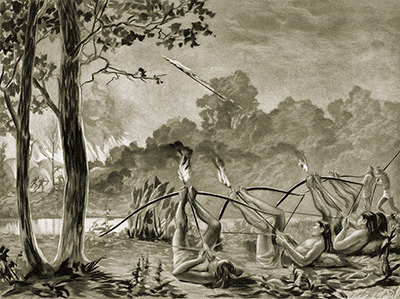
The catalyst came with the flood of the Uruguay River in early 1641 when bandeirantes Jerónimo Pedroso de Barros and Manuel Pires launched a full-scale offensive against the missions. Four hundred bandeirantes and a band of Dutch freebooters led 2,700 indigenous Tupí allies down the riverbank, their advance paralleled by a fleet of 300 canoes and rafts. No quarter would be extended this time—by either side. Waiting for the slavers were Jesuits and 4,200 Guaraní armed with 300 guns, cutlasses, assorted indigenous weapons and 360 small craft.
Command of the Jesuit-led force was entrusted to Father Romero, with other priests and brothers assuming support roles in the preparations. Leading the indigenous army was Brother Domingo, aided by lead cacique (indigenous field commander) Nicolás Ñeenguirú from Concepción and caciques Francisco Mbayroba of San Nicolás and Arazay from San Javier. Commanding the flotilla was cacique Ignacio Abiarú, who hailed from a mission on the Acaraguá River. Flanders-born Father Superior Claude Ruyer formulated the overall strategy.
The Guaraní made their stand at a point in present-day Misiones Province, Argentina, where Mbororé Creek empties into the Uruguay.
The bandeirantes made the first move, attacking downriver on February 25. From his command raft Abiarú engaged the enemy force with a tacuara wood cannon, forcing the bandeirantes to fall back after two hours of fighting. On March 11 the expected follow-up assault came, again by water. Avoiding encirclement, the Guaraní-Jesuit fleet drove the enemy boats toward the fortified promontory at the mouth of the Mbororé. Caught in a crossfire, the bandeirantes retreated to a hastily built palisade on the right bank of the river, where the Guaraní-Jesuit troops besieged them for four days. Thrice the slavers tried to surrender, only to be rebuffed. Blocked from retreating on the river, they fled into the surrounding jungle. Father Ruyer led the pursuit, driving the bandeirantes into the territory of the Gualachí, a cannibalistic people who feasted on the defeated slavers and their Tupí allies. The bandeirantes attempted yet another incursion into mission territory the following year, but they were soundly defeated and never again posed a threat.
In the aftermath of the bandeirantes’ defeat the Jesuit missions established their own armories and continued to provide military training to the Guaraní
In the aftermath of the bandeirantes’ defeat the Jesuit missions established their own armories and continued to provide military training to the Guaraní. On more than 70 subsequent occasions the Spanish governors of Asunción and Buenos Aires called on the Jesuits and their indigenous allies to either subdue hostile tribes or repel encroaching European powers. As a further bulwark against the Portuguese the Jesuits re-established seven missions east of the Uruguay River in Tapé. Those missions would play a role in the ultimate undoing of the Jesuits.
As the Jesuits increasingly proved their military mettle, resentment and jealousy of the society spread among European settlers and other religious orders who regarded the self-sufficient, vibrant Jesuit state as a challenge to their own authority and survival. While the missions enjoyed great prosperity over the next century, the Jesuits were continually fending off attacks from Spanish and Portuguese religious and civil authorities.
Meanwhile, Portugal continued to encroach on territory claimed by Spain, and in 1680 Portuguese traders established the port city of Nova Colônia do Santíssimo Sacramento, on the north bank of the estuary of Río de la Plata. Only 31 miles from Buenos Aires, on the opposite shore, the port quickly became a smuggling center that threatened both the Paraná and Uruguay rivers, which in turn led to the interior of the Spanish dominions.
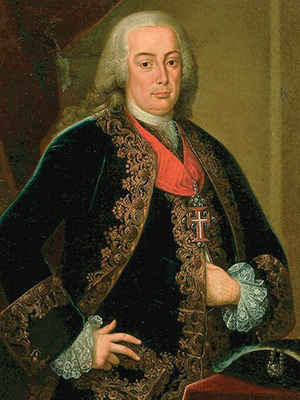
In the mid–18th century Europe itself was a politically and spiritually turbulent region. Much as the Jesuits had held sway over Catholic European monarchies in their positions as educators and confessors to the powerful, the secular ideas of Enlightenment politicians and philosophers also took hold, inevitably clashing with religious traditions. Among those especially hostile to the Jesuits was Portuguese statesman Sebastião José de Carvalho e Melo (later dubbed the Marquês de Pombal), who in 1750 was appointed the equivalent of prime minister. Mounting an intense propaganda campaign against the Jesuits, he managed to implicate them in the 1758 attempted assassination of King Joseph I. In its aftermath members of the deeply religious Távora family were publicly executed for attempted regicide, while their Jesuit confessor, Gabriel Malagrida, declared a heretic by the Inquisition, was publicly garroted to death, his body tossed on a bonfire. Pombal delighted in suppressing the Jesuits in Portugal and its possessions.
The beginning of the end for the Jesuits in Paraquaria came in 1750 when Spain and Portugal signed the Treaty of Madrid, in part to settle a dispute over ownership of Colônia. In exchange for the port, the Spanish surrendered to Portugal nearly 20,000 square miles of territory in Tapé, including the seven flourishing mission pueblos and their estancia lands, plus those belonging to missions on the west bank of the Uruguay. The pueblos’ 30,000 Guaraní inhabitants were to migrate with their moveable possessions to lands west of the Uruguay, a turning point depicted in the 1986 film The Mission, directed by Roland Joffé.
At first the indigenous governments of all but one of the pueblos and some of the fathers accepted the orders. But many Jesuits in the province reacted to the treaty with dismay and appealed to the king to reconsider—to no avail. The Jesuit hierarchy in Rome compelled the fathers to obey. In a precarious position among the European Catholic nations, Jesuit Superior General Ignacio Visconti invoked the vow of obedience and sent his representative Padre Lope Luis de Altamirano to enforce his and the Crown’s mandate for the peaceful surrender of the seven pueblos.
The Guaraní appealed to Ferdinand VI as Christian subjects of Spain and made an impassioned argument of their past loyalty to the crown as soldiers of the king
The Guaraní appealed to Ferdinand VI as Christian subjects of Spain and made an impassioned argument of their past loyalty to the crown as soldiers of the king. When their pleas also fell on deaf ears, they mobilized to defend their lands. In February 1753, after the Guaraní opposed the commissioners charged with demarcating the new boundaries, José de Andonaegui, the Spanish governor of Río de la Plata in Buenos Aires, declared a state of war between the crown and the seven pueblos. Joining in the declaration was Gomes Freire de Andrade, the Portuguese governor and captain-general of Rio de Janeiro. The standoff soon flared into the Guaraní War.
In June 1754 the Spanish governor moved north with a 1,500-man army. Opposing him was cacique Rafael Paracatú, from the Yapeyú mission across the Uruguay. Bad weather and persistent Guaraní ambushes forced Andonaegui to retreat, but not before he captured Paracatú in a skirmish.
At the same time Freire was marching on the pueblos. His Portuguese force soon encountered Guaraní under cacique Sepé Tiaraju, who was captured but managed to escape the night before he was to be executed. Bad weather and relentless guerrilla attacks forced the Portuguese to sign an armistice with the Guaraní in November 1754. The powers that be blamed the Jesuits for the indigenous uprising, and Padre Altamirano liberally excommunicated his complicit Jesuit brethren. Meanwhile, the Guaraní picked up support from fierce non-mission tribes.
The Europeans regrouped and in December 1755, aided by troops under José Joaquín de Viana, governor of Montevideo, renewed their offensive against the Guaraní. Andonaegui advanced from Buenos Aires with 1,500 men and 150 Spanish soldiers, Viana from Montevideo with 1,670, and Freire from Rio de Janiero with 1,200. They joined forces in Santa Tecla, and their first target was the mission of San Miguel.
Sepé was overall commander of the indigenous army, which numbered nearly 1,700 men and fielded eight indigenous artillery pieces made of bound tacuaruzu cane that could be fired only a few times. Unfortunately for the Guaraní, in a skirmish at Batoví in February 1756, Viana’s Montivideanos killed Sepé. Leadership passed to cacique Nicolás Ñeenguirú (namesake and descendant of the hero of Mbororé 115 years earlier). Though reportedly a man of great courage, Ñeenguirú was not as adept as his ancestor in the art of war.
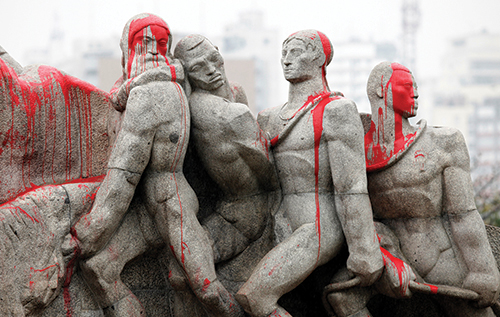
The Guaraní made their stand at an estancia south of the Yacuí River. There atop fortified Caibaté hill on February 10 the indigenous army, though entrenched behind ramparts, was soundly defeated in little more than an hour, suffering some 1,500 men killed and 154 captured. A handful of Guaraní escaped into the jungle to wage a futile guerrilla war. European losses in the battle were four killed and 30 wounded.
The European forces then took the pueblos in succession. After a few skirmishes retreating Guaraní burned San Miguel, the first, on May 17. By month’s end all the pueblos had fallen, and the war was over. Within two years the victorious Europeans had removed all the Guaraní. It was all for naught, for the Portuguese ultimately refused to give up Colônia and in 1761 signed the Treaty of El Pardo, abrogating the terms of the Treaty of Madrid. About 15,000 Guaraní returned to find their pueblos devastated.
Implicated as the instigators at the heart of the rebellion, the Jesuits also faced consequences. Father Tadeo Ennis, a Bohemian Jesuit, was captured at San Lorenzo along with his papers, which recounted the course of the uprising in detail. Fingered as the behind-the-scenes commander of the Guaraní, Ennis contended he was merely a chaplain and physician to the indigenous troops. He was later acquitted in Buenos Aires. Regardless, the society’s critics published a raft of anti-Jesuit books and manuscripts, accusing the order of having founded their own republic and other crimes against the Crown, as well as calling out individual Jesuits as participants in the war.
In 1759, at the Marquês de Pombal’s behest, Portugal became the first monarchy to formally expel the Jesuits from its dominion, followed by France in 1764 and Spain in 1767. Pope Clement XIV completed the suppression of the order with a papal brief promulgated on July 21, 1773.
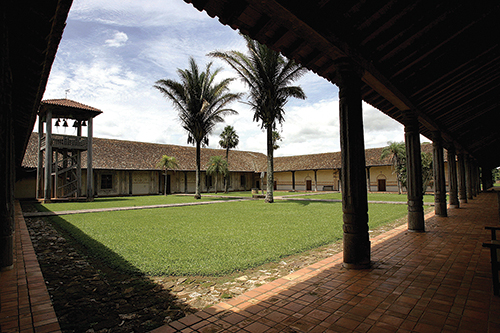
Thus ended the Jesuits’ dream of a Utopia in Paraquaria. In 1767–68 the order abandoned all of its South American missions and institutions, which were subsequently occupied, inventoried and sacked. The 30 empty pueblos fell under the administration of other orders or civil authority. Their failure was perhaps preordained, as those who followed could not maintain the balanced and equitable administrative and socioeconomic system established by the Jesuits. The Guaraní simply melted back into the jungle.
For more than 160 years a system the Jesuits held forth as an earnest attempt at Christian social justice—and envious critics derided as exploitative and paternalistic—survived and thrived in Paraquaria. The alternative for the Guaraní was enslavement or continual harassment from European settlers.
Forty-one years after Clement XIV’s papal suppression, Pope Pius VII restored the Society of Jesus in a papal bull issued on Aug. 7, 1814. The Jesuits returned to Argentina in 1836, Uruguay in 1842 and Brazil in 1844, though not to Paraguay until 1927. By then Paraquaria was a memory, as time had decayed the deserted mission buildings and nature had reclaimed the land. Today the scattered ruins serve as tourist attractions and World Heritage Sites. Among them is the Jesuit reduction of Jesús de Tavarangüé in Paraguay, which was unfinished at the Jesuits’ expulsion. Tavarangüé is a Guaraní blend word that roughly translates to, “The Town That Would Have Been in the Past.” MH
Jorge E. Taracido is a retired Jesuit preparatory school instructor from Kansas City, Mo., with a doctorate in romance languages and Renaissance studies. For further reading he recommends Black Robes in Paraguay, by William F. Jaenike, and A Vanished Arcadia, by Robert Bontine Cunninghame Graham.

